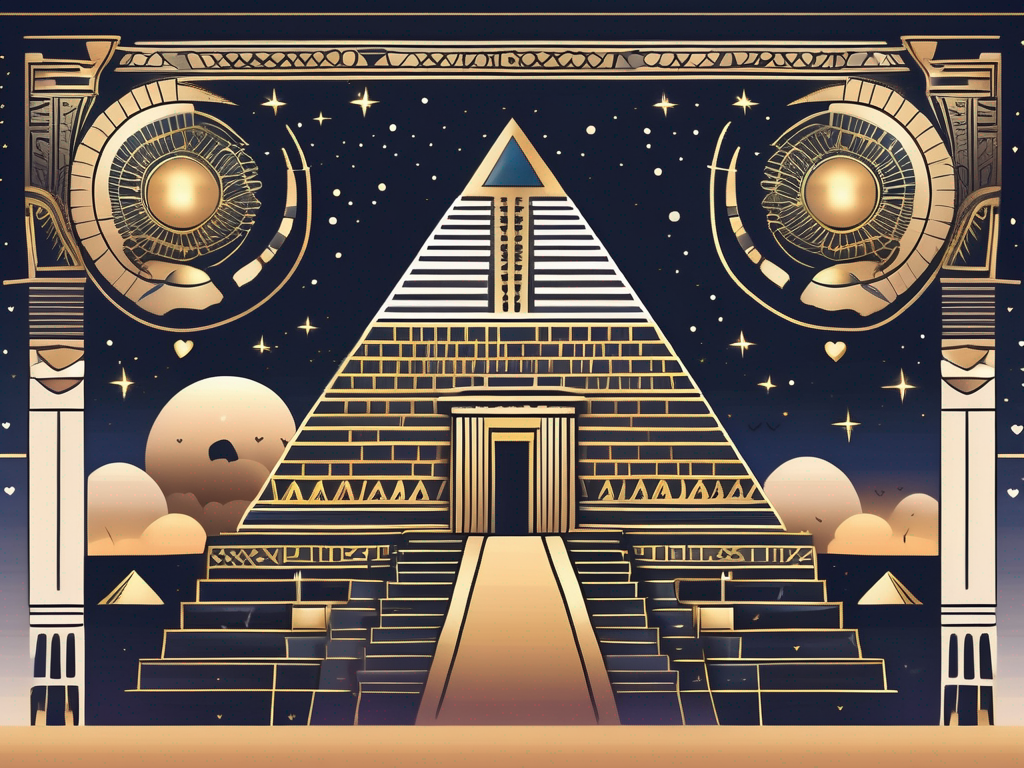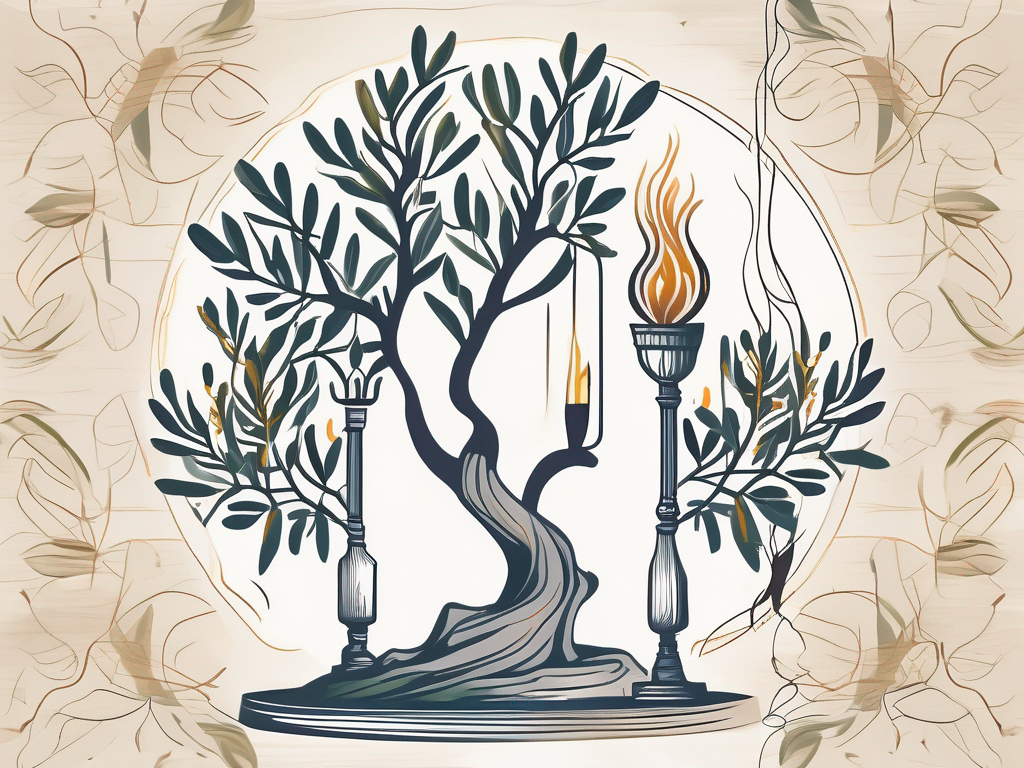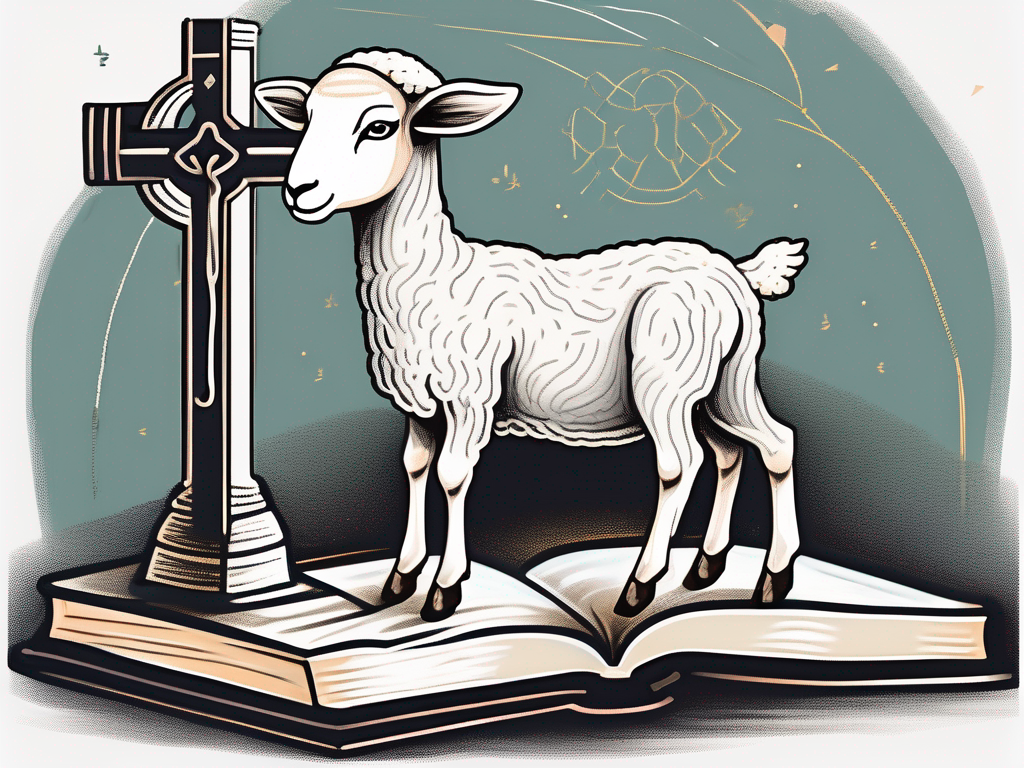Welcome to the captivating world of ancient Egyptian mythology and the mesmerizing goddess of love, Hathor. In this article, we will delve deep into the role of love in this ancient civilization, the significance of Hathor, and her influence on modern perception of love. So, let’s embark on this enchanting journey together!
Understanding the Role of Love in Ancient Egyptian Mythology
The ancient Egyptians held a deep reverence for love, considering it an integral part of their culture and society. Love, in all its forms, was celebrated and considered vital for the harmony and balance of their daily lives. It permeated every aspect of their existence, from personal relationships to their spirituality.
Love, or “Ib” in ancient Egyptian, encompassed not only romantic love but also familial love, friendship, and reverence for their deities. It was believed that love had the power to connect people with the divine and bring them closer to their true selves.
Ancient Egyptian society placed great cultural significance on love, recognizing it as a driving force behind their moral and ethical values. Love fostered compassion, empathy, and unity among individuals and communities. It was seen as a guiding light that led to the betterment of society.
Furthermore, love was associated with fertility and the continuation of life. The Egyptians believed that love played a crucial role in maintaining the cosmic order and ensuring the prosperity of their society for generations to come.
The Cultural Significance of Love in Ancient Egypt
In ancient Egyptian society, love was not merely an emotion but a fundamental principle that governed their actions and relationships. It was deeply ingrained in their daily rituals and ceremonies, serving as a cornerstone of their spiritual beliefs.
Love was considered a divine gift, bestowed upon humanity by the gods. It was seen as a sacred duty to honor and cherish this gift, nurturing love in all its forms. The Egyptians believed that by cultivating love within themselves and their communities, they could create a harmonious and balanced society.
Love was also seen as a transformative force, capable of transcending boundaries and bridging gaps between individuals. It was believed that through love, people could overcome conflicts, heal wounds, and forge deep connections with one another.
Ancient Egyptian art and literature often depicted scenes of love and affection, showcasing the importance of love in their society. Love poems, songs, and stories were composed to celebrate the beauty and power of love, inspiring generations to embrace its transformative qualities.
Love Deities in Egyptian Mythology
A plethora of deities held a special place in the hearts of the ancient Egyptians when it came to matters of love. One of the most revered among them was Hathor, the goddess of love, beauty, and joy.
Hathor’s influence extended beyond romantic love and embodied all aspects of love in its purest form. She was celebrated as the divine mother of the pharaohs, guiding and nurturing them with her boundless love and protection.
Another significant deity associated with love was Osiris, the god of the afterlife and resurrection. Osiris was believed to have a profound understanding of love’s transformative power, as he experienced death and rebirth. His love for his sister-wife Isis and their son Horus symbolized the eternal cycle of life, death, and rebirth.
Isis, the goddess of magic and fertility, was also closely linked to love. She was revered as the ideal mother, embodying the nurturing and protective aspects of love. Her love for Osiris and her unwavering dedication to resurrecting him exemplified the depth of her love and devotion.
These deities, along with many others, played significant roles in ancient Egyptian mythology, embodying different aspects of love and serving as sources of inspiration and guidance for the people.
The Goddess Hathor: An Overview
Now that we have explored the cultural significance of love in ancient Egypt, let’s focus on the goddess Hathor herself. Her name loosely translates to “the house of Horus,” representing her role as a foundational force within Egyptian mythology.
Hathor has deep roots in ancient Egyptian mythology dating back to the Old Kingdom period. She was believed to be one of the oldest and most revered goddesses, her origins shrouded in mystique.
Some legends say that Hathor was born from the tears of the sun god Ra, representing her connection to the sun, warmth, and life-giving energy. Others claim she emerged from the primeval waters, symbolizing her association with fertility and birth.
Hathor played a multifaceted role in Egyptian mythology, embodying love, beauty, motherhood, dance, and music. She was depicted as a goddess with the head of a cow, symbolizing her nurturing and protective nature.
As the goddess of love, Hathor was believed to guide souls in the afterlife, ensuring their journey was filled with love and joy. She was also viewed as the patroness of music and dance, bringing harmony and celebration wherever she went.
The Symbolism of Hathor’s Cow Head
The representation of Hathor with the head of a cow holds deep symbolism in ancient Egyptian culture. The cow was highly regarded as a symbol of fertility, abundance, and nurturing. By embodying these qualities, Hathor was seen as a powerful force in ensuring the continuity of life.
Furthermore, the cow was associated with the goddess Nut, who was believed to be the mother of the gods. Hathor’s cow head, therefore, emphasized her maternal and protective nature, as she watched over and cared for all living beings.
In addition to her nurturing qualities, the cow head also represented the concept of rebirth and regeneration. Just as cows give birth to new life, Hathor was believed to facilitate the cycle of life and death, guiding souls through the afterlife and ensuring their eventual rebirth.
Hathor’s Temples and Worship
Hathor was widely worshipped throughout ancient Egypt, and numerous temples were dedicated to her. One of the most famous of these temples is the Temple of Hathor at Dendera, located in Upper Egypt.
The Temple of Hathor at Dendera is renowned for its exquisite architecture and intricate reliefs. It served as a center for religious ceremonies and festivals, where devotees would gather to honor and pay tribute to the goddess.
Within the temple, there were sacred spaces dedicated to different aspects of Hathor’s divine nature. These included areas for music and dance performances, as well as sanctuaries for rituals related to fertility and childbirth.
Worship of Hathor extended beyond the temple walls, with people offering prayers and making offerings to her in their homes. She was seen as a benevolent and accessible deity, one who could be called upon for guidance, protection, and blessings in various aspects of life.
Overall, Hathor held a prominent place in ancient Egyptian mythology and religious practices. Her multifaceted nature and association with love, beauty, motherhood, dance, and music made her a beloved and revered goddess, whose influence extended far and wide.
The Symbolism Associated with Hathor
To truly understand the essence of Hathor, we must explore the symbolism that surrounds her. Through these symbols, we can gain deeper insight into the qualities and attributes she embodies.
The Sistrum and Other Symbols
One of the most prominent symbols associated with Hathor is the sistrum, a musical instrument resembling a rattle. It was believed that the sound of the sistrum invoked her presence, spreading love, joy, and harmony wherever it was played.
Additionally, the cow was a powerful symbol representing Hathor’s nurturing and maternal instincts. The lotus flower, symbolizing rebirth and transformation, was also closely associated with her, further emphasizing her role as a bringer of life and regeneration.
Hathor’s Connection with the Sky, Sun, and Moon
Beyond her aspects of love and motherhood, Hathor also had a profound connection to the celestial realm. She was closely associated with the sky, sun, and moon, representing the vastness and interconnectedness of the universe.
As the sun goddess, her radiant energy brought warmth, light, and life to the world. And just as the moon ebbs and flows, Hathor’s influence was believed to wax and wane, reflecting the cyclical nature of love and beauty.
Worship and Rituals of Hathor
The goddess Hathor held a prominent place in the hearts of the ancient Egyptians, and her worship was a central part of their religious practices. Temples dedicated to her were spread throughout Egypt, serving as sacred spaces for her devotees.
Temples Dedicated to Hathor
One of the most renowned temples dedicated to Hathor was located in Dendera, a city located in Upper Egypt. The Temple of Hathor at Dendera was a visual masterpiece, adorned with intricate carvings and paintings depicting her various aspects.
These temples served not only as places of worship but also as centers of celebration and enlightenment. Pilgrims would visit these sacred sites to seek Hathor’s blessings, engage in rituals, and partake in joyous festivals that honored her divine presence.
Celebrations and Festivals in Honor of Hathor
Every year, the ancient Egyptians held elaborate celebrations and festivals to honor Hathor. These festivities were filled with music, dance, and offerings to the goddess, expressing gratitude for her unwavering love and guidance.
The most iconic of these celebrations was the “Hathor Festival,” which brought people from all walks of life together to celebrate love, beauty, and joy. It was a time of revelry, reflection, and communal bonding, reinforcing the importance of love in their society.
Hathor’s Influence on Modern Perception of Love
Hathor’s legacy continues to reverberate in our modern world, shaping our perception and understanding of love. Her enchanting presence can be found in literature, art, and popular culture.
Hathor’s Legacy in Literature and Art
Throughout history, writers and artists have drawn inspiration from Hathor’s allure and mystique, incorporating her into their works. Her timeless beauty and capacity for love have been immortalized in countless poems, stories, and visual representations.
From ancient manuscripts to renowned masterpieces, Hathor’s image sparks curiosity and admiration, serving as a reminder of the enduring power of love and its profound impact on human existence.
The Modern Interpretation of Hathor’s Symbolism
In our fast-paced world, Hathor’s symbolism provides a respite, reminding us of the importance of love, beauty, and joy in our lives. Her association with music and dance inspires us to find harmony in our daily routines and embrace creative outlets that bring us closer to our own passions.
Moreover, Hathor’s representation as a nurturing mother figure encourages us to cultivate loving relationships and create a nurturing environment for ourselves and others.
In conclusion, Hathor, the enchanting Egyptian goddess of love, continues to captivate us through her timeless influence. Her role in ancient Egyptian mythology showcases the cultural significance of love, while her symbolism and worship serve as a reminder of the enduring power of love in our modern lives. As we navigate our own journey of love, may we find inspiration in Hathor’s boundless compassion and affection.












